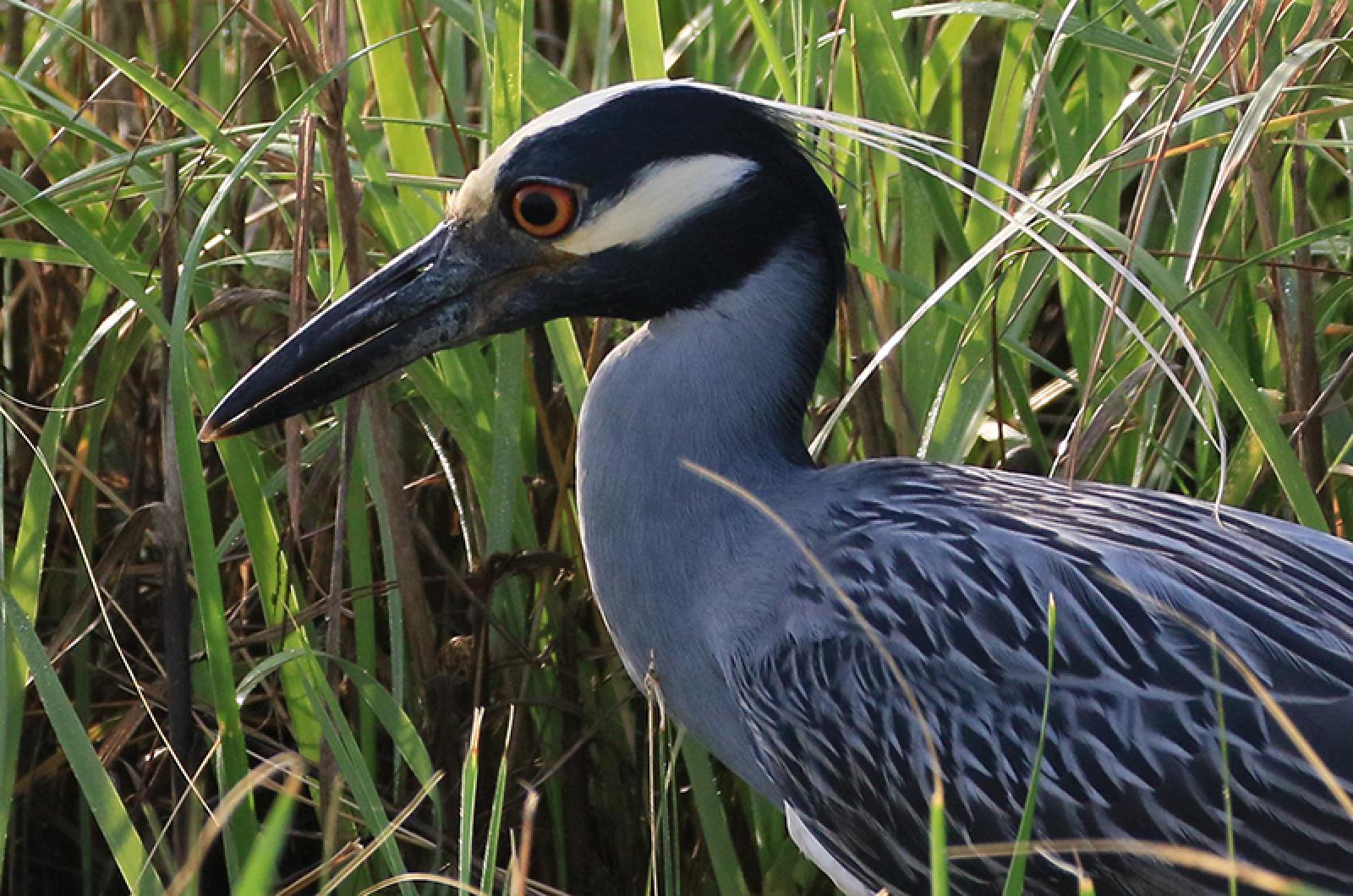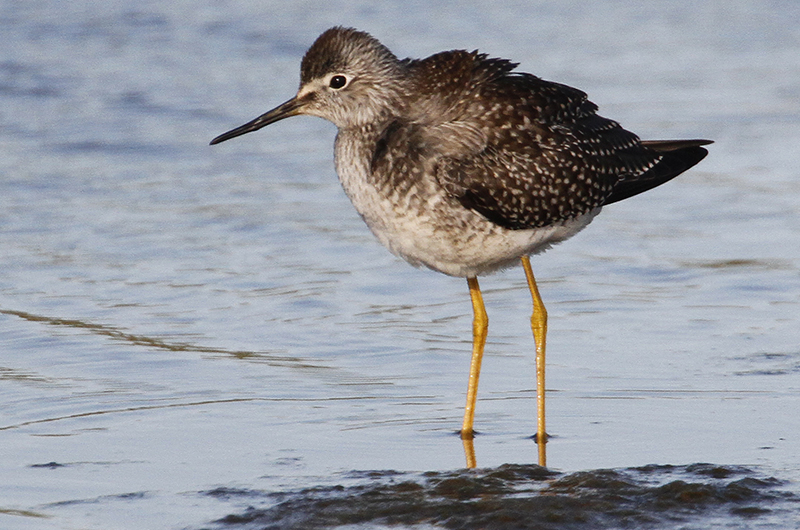August is here and there are lots of young fledglings around. These fledglings are full grown and can fly, so caution is needed to conclude that the youngster fledged from a nest in that area. Seeing a parent feed a youngster does not mean that it was hatched in that area. In past years I have seen large flocks of tree swallows migrating along the South Shore and a few adults — with blue backs — were still feeding brown-backed youngsters. But they certainly did not nest on those beaches, and probably not even on the Island.
The chances of its nesting locally are increased if the species has been there throughout the season. They would be confirmed nesters if the birds are observed on the nest. But a few years back I saw a family of barn swallow nestlings in their nest in mid-August, leaving me no doubt about whether they nested there (although I did not get a photograph of them). The second Massachusetts Breeding Bird Atlas, then in progress, stopped confirming breeding status in mid-July. Even the above mentioned family of barn swallows observed in August in their nest was not accepted. Birders make such distinctions to determine migratory patterns and local population trends, and there are rules to standardize the results.
We cannot confirm that either the fledgling yellow-billed cuckoo or the fledgling ovenbird, both spotted by Caroline Heald at Cedar Tree Neck on July 26 nested there. The ovenbird is the more likely nester, as multiple pairs have been there since May. She also saw eastern wood-pewee, two cedar waxwings, yellowthroat, redstart and prairie warbler.
Bird Sightings
Along the Mink Meadows shoreline Jeff Peters and others spotted a yellow-crowned night-heron on July 28. This is the first report this year for this regularly occurring but never common species. Steve Allen spotted another one, a juvenile this time, at Felix Neck on Aug. 3. Other juvenile herons he saw included two little blue herons, a great blue heron all, and a green heron. The Aug. 2 Felix Neck Early Birders also spotted great egret, snowy egret, killdeer, greater yellowlegs and hairy woodpecker.
Green herons are widespread and fairly conspicuous these days. Sarah Mayhew saw one at Lambert’s Cove Beach on Aug. 1, Debra Luce and Warren Gosson spotted one along Lagoon Pond the same day, and Jeff Bernier found one at Eel Pond on July 28.
Wendy Culbert and I had the pleasure of listening to a saw-whet owl calling in our yard early in the morning — around sun-up on Aug. 1.
Another new species for the season is the red knot. On July 31, Lanny McDowell, Pete Gilmore and Warren Woessner found a few red knots and 11 lesser yellowlegs, while Tim Brew observed two knots and seven whimbrels the next day — perhaps the largest flock of the latter species that I remember.
Speaking of good sized flocks, Larry Hepler spotted “a pile of willets,” 11 of them, at Chilmark Pond in early August.
Least terns are early migrants, as the peak of their southward migration is on July 25. So it is no surprise that Little Beach, which hosted a large lest tern colony, only had five least terns on August 1. The day before, on Norton Point Beach, Lanny McDowell, Pete Gilmore and Warren Woessner spotted a flock of about 100 of these diminutive terns. Only 18 leasties were found by Tim Brew on Aug. 3.
The list of other shorebirds seen recently is fairly lengthy but also fairly predictable: American oystercatcher, black-bellied plover, semipalmated plover, piping plover, ruddy turnstone, willets, least sandpiper, semipalmated sandpiper, sanderling, short-billed dowitcher, spotted sandpiper, greater yellowlegs and lesser yellowlegs. These species were reported by Gus BenDavid and Rob Bierregaard on August 1, Susan Whiting at Town Cove of Tisbury Great Pond on July 30, Philip Edmundson on South Beach near Watcha Pond and Sepiessa, both on July 28, Tim Brew on Norton Point Beach on Aug. 3, Margaret Klugman on State Beach on August 3 and Luanne Johnson on Major’s Cove on Aug. 4.
A sure sign of the southward migration is the large flocks of tree swallows that swarm back and forth over our beaches in August and September. Phil Edmondson counted 212 of them along West Tisbury’s south shore on July 28, the first large flock of the season. Also on the swallow front, I had both bank and rough-winged swallows at Cedar Tree Neck on Aug. 1.
Charles Kernick had chipping sparrows visiting his yard, the first sighting in quite a while.
Lastly, families of birds. Keith Deren had a family of Cooper’s hawks on the ground in his yard, with three or four fledglings, on July 29. And Dave Messina watched as a family of mallard with six downy chicks crossed the road in Aquinnah July 31. Make way for ducklings!
The nesting season is almost over and southward migrants are starting to show up. Please report your sightings to birds@mvgazette.com.
Robert Culbert is an ecological consultant with Nature Watch LLC living in Vineyard Haven.






Comments
Comment policy »